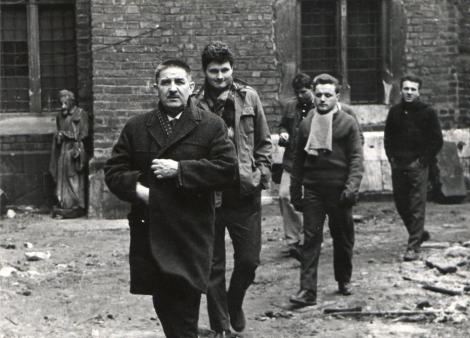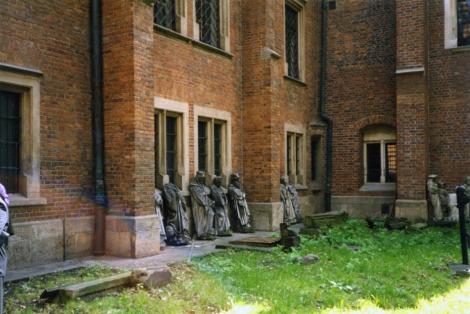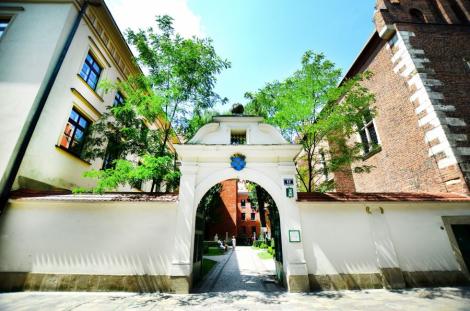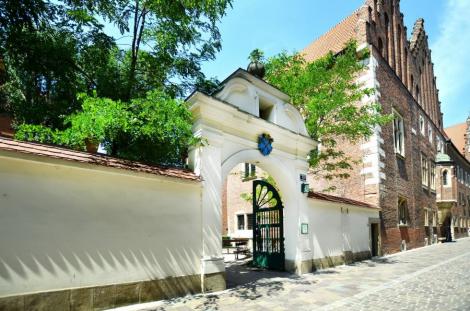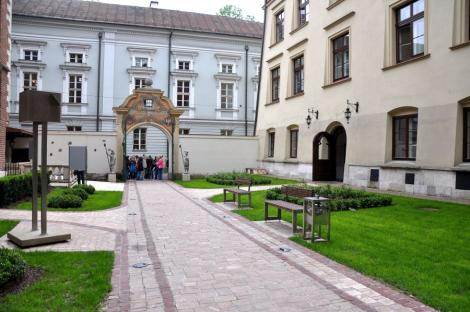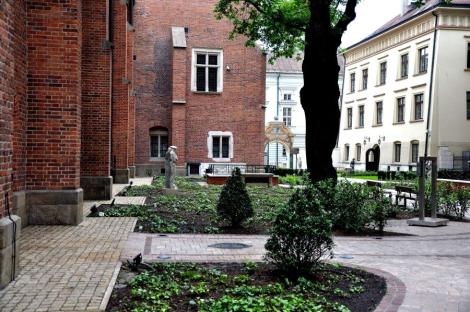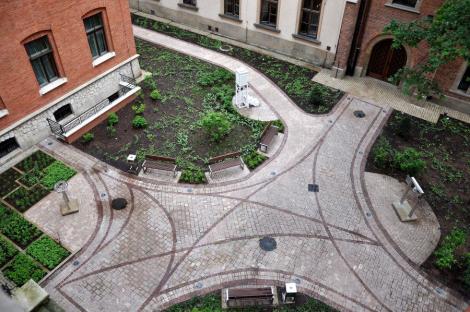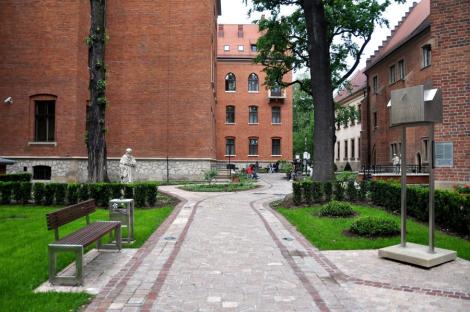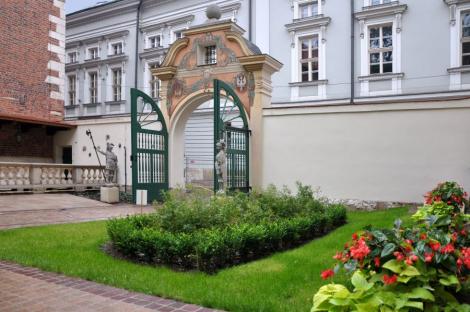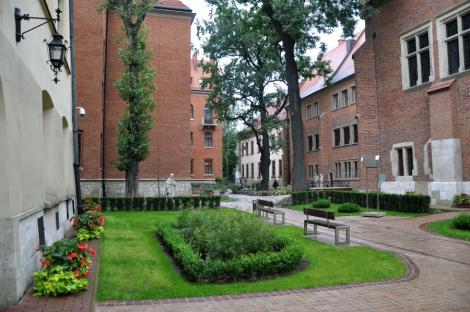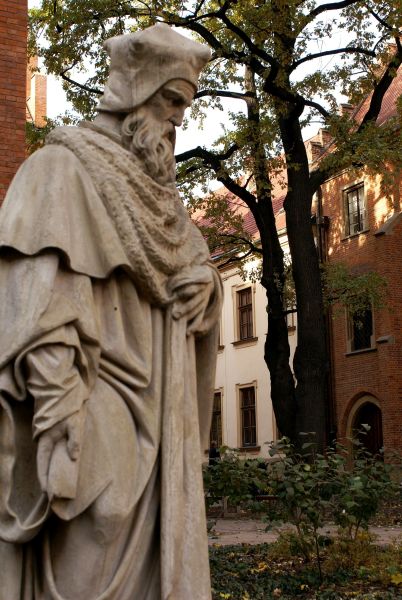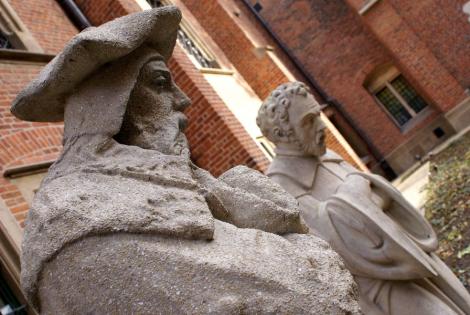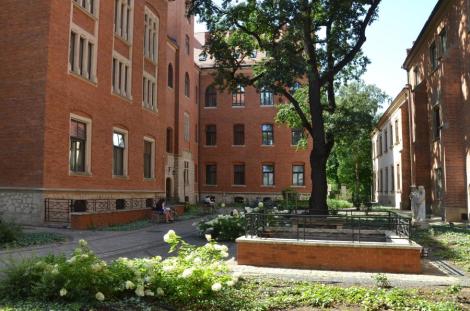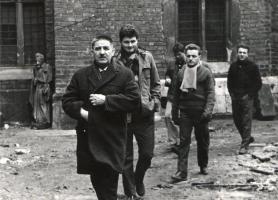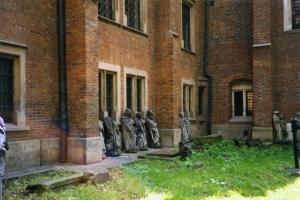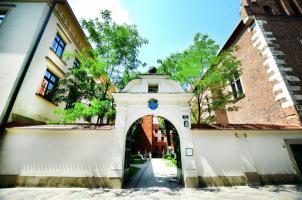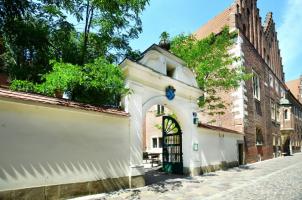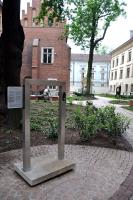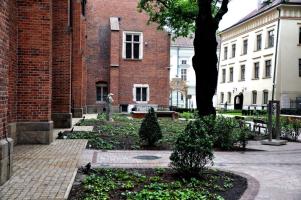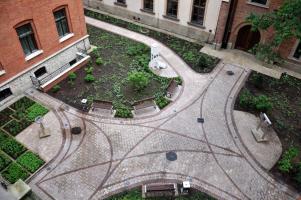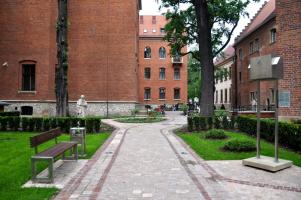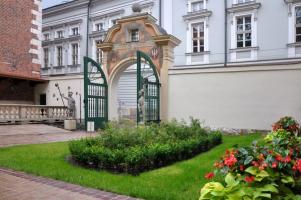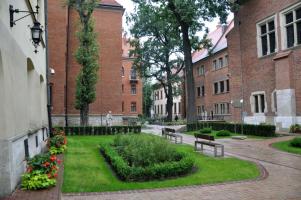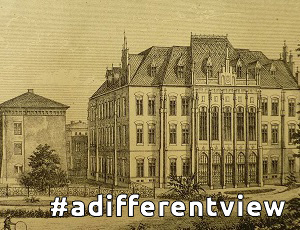
Professors' Garden – a relatively small green area between Collegium Maius, Collegium Minus, Collegium Witkowski, and Collegium Novodvorscianum – was officially opened to visitors five and a half years ago. During its centuries-old history, this green enclave has gone through several periods of decline. It has been used for poultry farming, vegetable garden and orchard, and – for some time – as a latrine site.
The first mention of the Professors' Garden dates back to 1467. At the time, it was twice as large as it currently is, spanning the area from the south-western side of Collegium Novum to the city walls. In the beginning, it was used to grow crops that were served to professors in the university refectory. In 1475, a large poultry enclosure was added. Between early 16th century and mid-19th century, the Garden also featured two large pit latrinesfor students and scholars.
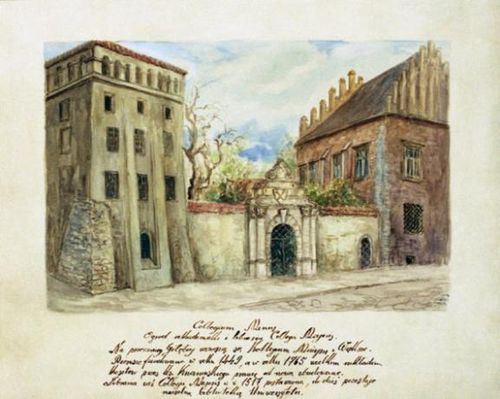 (Left: The entrance to the Professors' Garden in 18th century. Watercolour painting by Halina Kostecka, based upon old sketches of Michał and Teodor Baltazar Stachowicz, from the collection of the JU Collegium Maius Museum)
(Left: The entrance to the Professors' Garden in 18th century. Watercolour painting by Halina Kostecka, based upon old sketches of Michał and Teodor Baltazar Stachowicz, from the collection of the JU Collegium Maius Museum)
At the end of the 18th century, a period of decline began for the Professors' Garden. During the time of Collegium Maius restoration (1840–1871), the authorities did not decide to renovate the Garden. In 1881, it briefly faced total destruction, as Feliks Księżarski, an architect favoured by the authorities, planned to expand Collegium Maius to stretch up to ul. Gołębia. Demolition of Collegium Minus was also part of this project; however, higher authorities in Vienna prevented that in the end.
It was not until the end of 19th century that the JU Department of Botany started to take care of the area. Prof. Edward Janczewski used his own funds to establish the Botanical-Agricultural Garden, spanning about 0,28 hectares (0,69 acres). Before that, around the year 1875, a small garden of medicinal herbs was located there, but it was probably destroyed during the construction of Collegium Novum. There were also some trees growing there that were used by the staff of the Jagiellonian Library to dry their laundry.
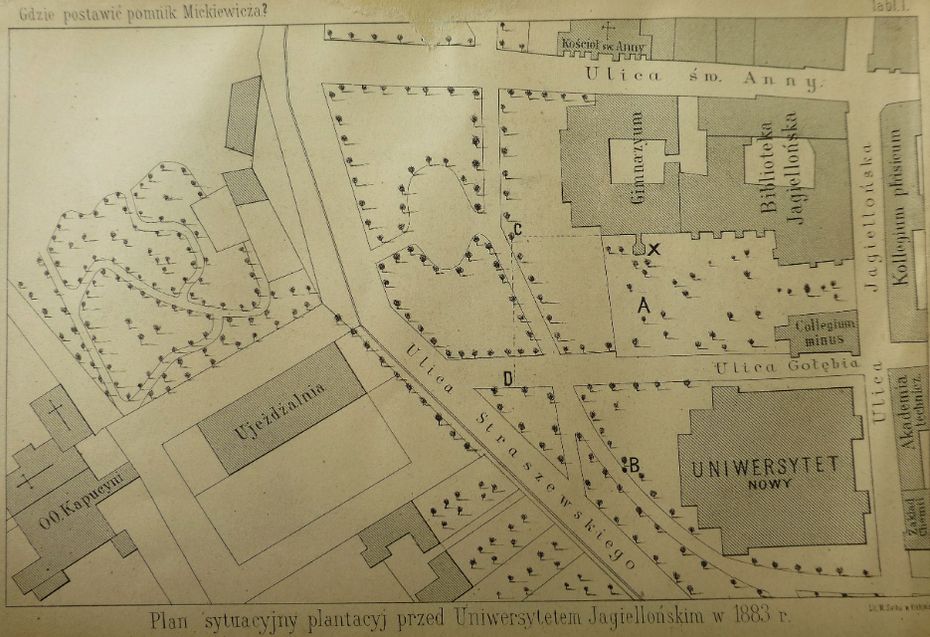
(Above: Schematics of the Academic Quarter in the 1880s, from the collection of JU Archives)
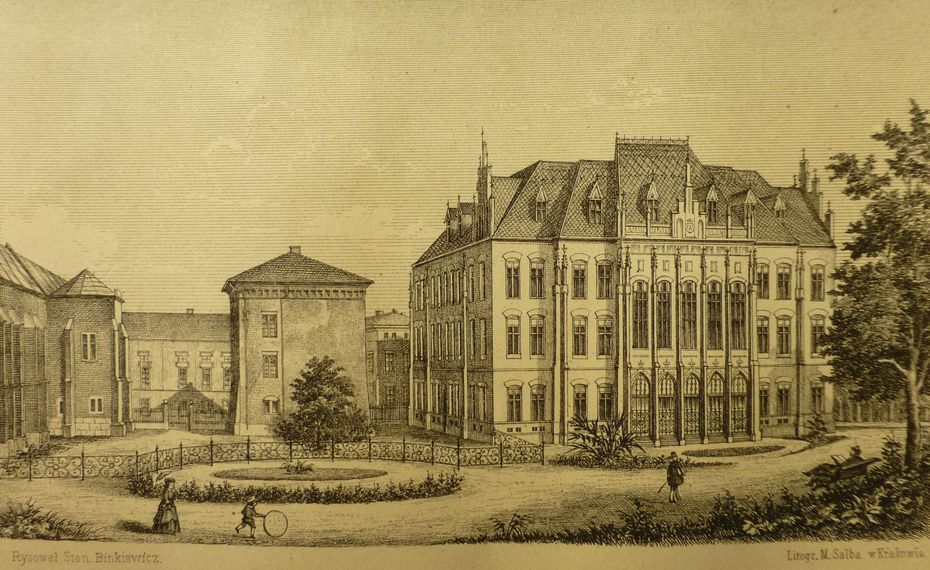
(Above: Visualisation of the Professors' Garden in the second half of the 19th century, part of the Adam Mickiewicz square project by Stanisław Binkiewicz, from the collection of JU Archives)
Prof. Janczewski's garden had a regular shape due to its purpose. Despite its very small size, it boasted a considerable number of plant types (as many as 400 species). The localisation of the garden was very advantageous, since the nearby Collegium Novum featured a "natural science room", where lectures on agricultural botany were conducted. According to a source from 1900, it was divided into two parts.
In the early 20th century, during the construction of Collegium Phisicum (today: Collegium Witkowski), the garden was again destroyed. It stayed that way until the reconstruction of Collegium Maius in the 1960s, when it was partially restored, with several sheds, forges and storehouses removed from its premises. In the following decades, this charming retreat has fallen into decline again.
 The garden's situation changed dramatically several years ago. In 2008, its revivification began. It was preceded by archaeological research, during which the scholars have discovered the remains of a Medieval Jewish settlement. The renewed Professor's Garden was officially opened to visitors on 12 May 2010. Tourists may stroll through the garden along paths and narrow alleys, and enjoy the serene atmosphere created by shrubs, flowers, wild strawberries and herbs.
The garden's situation changed dramatically several years ago. In 2008, its revivification began. It was preceded by archaeological research, during which the scholars have discovered the remains of a Medieval Jewish settlement. The renewed Professor's Garden was officially opened to visitors on 12 May 2010. Tourists may stroll through the garden along paths and narrow alleys, and enjoy the serene atmosphere created by shrubs, flowers, wild strawberries and herbs.
The Garden also sports 19th century sculptures of professors dressed in gowns and academic caps. Interactive models of five scientific devices, related to different periods of the university's development, provide a more modern addition to the Gardens' decorations. The two earliest models, a sundial and armillary sphere, symbolise the 15th and 16th century. The Magdeburg hemispheres represent the Enlightenment, when the first physics laboratories were created. 19th century is symbolised by a Stevenson screen, while the 20th century is represented by an original part of the first cyclotron built by the Jagiellonian University staff as well as a scintillation counter used to measure cosmic radiation.
The Professors' Garden can be accessed via gates located on ul. Jagiellońska and ul. Gołębia.
(Below: Pictures 1–3 – Prof. Karol Estreicher Jr. with a group of students during the renovation, from the collection of JU Museum; pictures 4–15 – modern Professors' Garden, photographs by Anna Wojnar)


